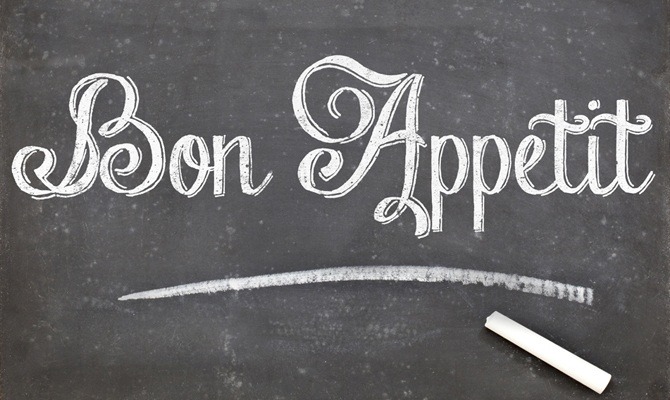What's A Maître D'? And 9 Other Fancy Restaurant Terms, Explained
Dining at a fancy restaurant, especially a French one, can be a rather confusing endeavor for those of us that don't speak the language. Just making your way through the menu can be a challenge! To make your gourmet dining experience stress-free, we've rounded up ten of the most confusing terms that you're likely to encounter at a fancy restaurant.
What's a Maître D'? And 9 Other Fancy Restaurant Terms, Explained (Slideshow)
The menu and the chain of command at your local Denny's is fairly cut-and-dry. The greeter says hello and shows you to your table, the waiter or waitress takes your order and brings your food, the manager drops by to see how your meal is going, and the busboy clears your dishes. All in all, a straightforward restaurant experience.
There are far more moving pieces at a high-end restaurant . One host or hostess greets you while another takes you to your table, the server takes your order, the runner delivers your food, the head waiter checks in periodically, and a busser clears your dishes. In some restaurants, is the tables are looked after by a team of waiters, presided over by a captain. To make it even more complex, in some upscale restaurants, a maître d' oversees the entire dining room. As mentioned, things can get complicated.
Though fancy restaurants (and their menus) might be a little confusing to navigate, the system doesn't vary much from one restaurant to the next. If you have an issue, speak to the manager; if you want a refill on your cocktail, ask your waiter or waitress, not a busser. Most importantly? If any menu item confuses you, don't be afraid to ask about it. There are few things that annoy a chef more than a diner sending back a menu item because they didn't ask what sweetbreads are before ordering a dish of sautéed veal thymus.
À La Carte
Translation: "According to the menu."
To order a dish à la carte means to order it separately from the other menu items. At most restaurants every menu item is à la carte, but if the menu is set (prix-fixe), ordering a separate item that's not included means ordering it à la carte. In other words, you'll need to pay extra for it. Additionally, if you want, for example, a piece of chicken without the vegetables and potatoes that it comes with on the menu, you should order the chicken à la carte. Some upscale restaurants offer set menus, or tasting menus, as well as à la carte options so you can make your own combinations.
Amuse-Bouche
Translation: "Mouth-amuser."
You know you're in for a high-end meal when a complimentary amuse-bouche arrives shortly after you sit down. This is traditionally a very small course — just one or two bites — that the chef sends to the table. It's a way for the chef to express his or her philosophy on food and to give diners a glimpse of the meal that they're about to experience. While it literally translates as something with which to amuse the mouth, the gesture is more about a warm welcome and way to wake up diners' tastebuds.


